Morrer pelos Passarinhos
collaboration with Lígia Soares
Henrique Furtado Vieira e Lígia Soares, juntam-se pela primeira vez numa criação para estudar, reproduzir, reinventar formas artísticas resultantes de sistemas em colapso e, com isso, criar uma coleção de performances baseada na relação histórica entre a crise e a emergência de diferentes vanguardas artísticas.
Henrique Furtado Vieira and Lígia Soares have come together for the first time in a creative project to study, reproduce and reinvent artistic forms resulting from collapsing systems and, with this, create a collection of performances based on the historical relationship between the crisis and the emergence of different artistic vanguards.
Morrer pelos Passarinhos (2024/2025)
Morrer Pelos Passarinhos visa encontrar formas de partilhar significativamente com o público o fim de um mundo conforme o fomos conhecendo e a possibilidade de um luto coletivo que nos possa confrontar com o não-sentido, com o vazio, com o medo, com a desumanização, mas principalmente, uns com os outros.Vários movimentos da vanguarda artística surgiram após momentos traumáticos da história, momentos em que a humanidade mostrou novos alcances para a sua capacidade autodestrutiva - as Grandes Guerras que se sucederam ou a Guerra Fria com a sua ameaça atómica. Hoje, anos 20 do século. XXI, vivemos mais uma vez perante o “fim do mundo”. Perante a derrocada iminente que estratégias podemos usar para combater a “impotência da nossa vontade consciente”? Se no séc. XX, a apologia da informação, tão necessária como consequente ao possível progresso civilizacional, era ainda a máxima que poderia salvar-nos e ao mundo de atos violentos, hoje sabemos que a nossa agressão ao planeta que habitamos nos está já a ser fatal e, por alguma razão absolutamente extraordinária, vivemos com essa informação de uma forma consciente e passiva, perpetuando a nossa participação ativa na sua destruição. O projeto busca assim inspiração nos movimentos artísticos históricos que surgiram em resposta a períodos de crise, como o Dadaísmo, a dança expressionista e o teatro do absurdo, para enfrentar os desafios atuais, como a crise ambiental e o sentimento de impotência diante de sistemas globais complexos.
Uma das características mais distintivas de Morrer Pelos Passarinhos é o seu foco na participação ativa do público. Envolvendo diretamente participantes locais, espetadores e transeuntes no espaço público nas performances, o projeto não apenas democratiza o processo criativo, mas também fortalece a relação entre os artistas e a comunidade, permitindo que todos contribuam para a sua narrativa. O projeto ambiciona criar um espaço onde a arte não apenas representa ou critica a realidade, mas também participa ativamente na modelagem de futuros possíveis, engajando o público de maneira significativa e transformadora.
A coleção Morrer Pelos Passarinhos funciona como um espólio de performances prontas a ativar e a adequar aos espaços e contextos de circulação aproveitando as suas diferentes características e múltiplas possibilidades de adaptação.
To Die for Little Birds (2024/2025)
TO DIE FOR LITTLE BIRDS aims to find meaningful ways to communicate with the public about the end of the world as we have known, exploring a kind of collective mourning that can confront us with emptiness, with fear, with dehumanization, but mainly with each other.Several avant-garde art movements emerged after traumatic moments in history, moments when humanity’s ability for self-destruction reached new levels – both World Wars, one after the other, or the Cold War and its atomic threat. Today, in the 20s of the 21st century, we are once again facing the “end of the world”. Faced with imminent collapse, what strategies can we use to combat the “powerlessness of our conscious will”? In the 20th century, the advocacy of information, both a necessity and a consequence of civilization’s progress, was still the dictum that might save us and the world from violent acts, but we now know that our aggression against the planet we inhabit is already proving fatal to us, and, for some absolutely unfathomable reason, we continue living with this information in a conscious and passive way, perpetuating our active participation in its destruction. The project seeks inspiration from historical artistic movements that emerged in response to periods of crisis, such as Dadaism, expressionist dance and the theatre of the absurd, to face current challenges, such as the environmental crisis and the feeling of powerlessness in the face of complex global systems.
One of the most distinctive features of TO DIE FOR LITTLE BIRDS is its focus on active audience participation. By directly involving local participants, spectators and passersby in public space in the performances, the project not only democratizes the creative process, but also strengthens the relationship between artists and the community, allowing everyone to contribute to its narrative. The project aims to create a space where art not only represents and/or criticizes reality, but also actively participates in shaping possible futures, engaging the public in a meaningful and transformative way.
TO DIE FOR LITTLE BIRDS collection functions as a collection of performances ready to be activated and adapted to spaces and circulation contexts, taking advantage of their different characteristics and multiple possible adaptations.
Direction, creation and performance Lígia Soares e Henrique Furtado Vieira
From an original idea by Lígia Soares e Maria Jorge
Production director Ana Lobato
Technical direction and lighting design Hugo Coelho
Musical composition and sound design João Lucas
Performance (Triumphal Ode) Iqbal Hossain
Participation in creation workshops Coline Gras, Daniela Melo, Duarte Romão, Filipa Noronha, Lara Almeida, Marissel Marques, Marta Nogueira, Pedro Jesus and Zé Alves
Production Romance Associação Cultural
Coproductions Teatro-Cine Torres Vedras (PT) and Teatro Municipal do Porto (PT) ///
Creation and performance residencies Gretua (Aveiro), Festival END (Coimbra), Rua das Gaivotas 6 (Lisboa), A Gráfica (Setúbal) ///
Residency support Pólo Cultural das Gaivotas (Lisboa), O Rumo do Fumo (Lisboa), Centro Cultural da Malaposta / Minutos Redondos (Odivelas), LAMA Teatro (Faro), OPART and Estúdios Victor Córdon (Lisboa) ///
Acknowledgments Afonso Matos, Giulia Dal Piaz
Funded by República Portuguesa/ Dgartes - Direção Geral das Artes ///
Press review
Ironia sensível com lucidez poética em "Morrer pelos passarinhos"
De Catarina Ferreira, Jornal de Notícias
#1: Godôs
"Godôs" é uma performance que explora a temática da espera, onde os artistas tentam convencer transeuntes a ocupar o palco vazio de um teatro, enquanto o público acompanha essa busca imprevisível em tempo real, criando um encontro inesperado entre o espectador e o "Godot".
"Godos" is a performance that explores the theme of waiting, where the artists attempt to persuade passersby to occupy the empty stage of a theater, while the audience follows this unpredictable search in real time, creating an unexpected encounter between the spectator and the "Godot."



© Tatiana Lages e
© Alípio Padilha
#2: Bocas
"Bocas" é uma performance onde os performers, através de diálogos virtuais projetados nos telemóveis que seguram à frente dos rostos, exploram de forma trágico-cómica a tensão entre a comunicação digital e a desconexão física, refletindo a solidão moderna gerada pela tecnologia.
"Not We" is a performance in which the performers, through virtual dialogues projected on the mobile phones they hold in front of their faces, explore in a tragicomic way the tension between digital communication and physical disconnection, reflecting on the modern loneliness generated by technology.


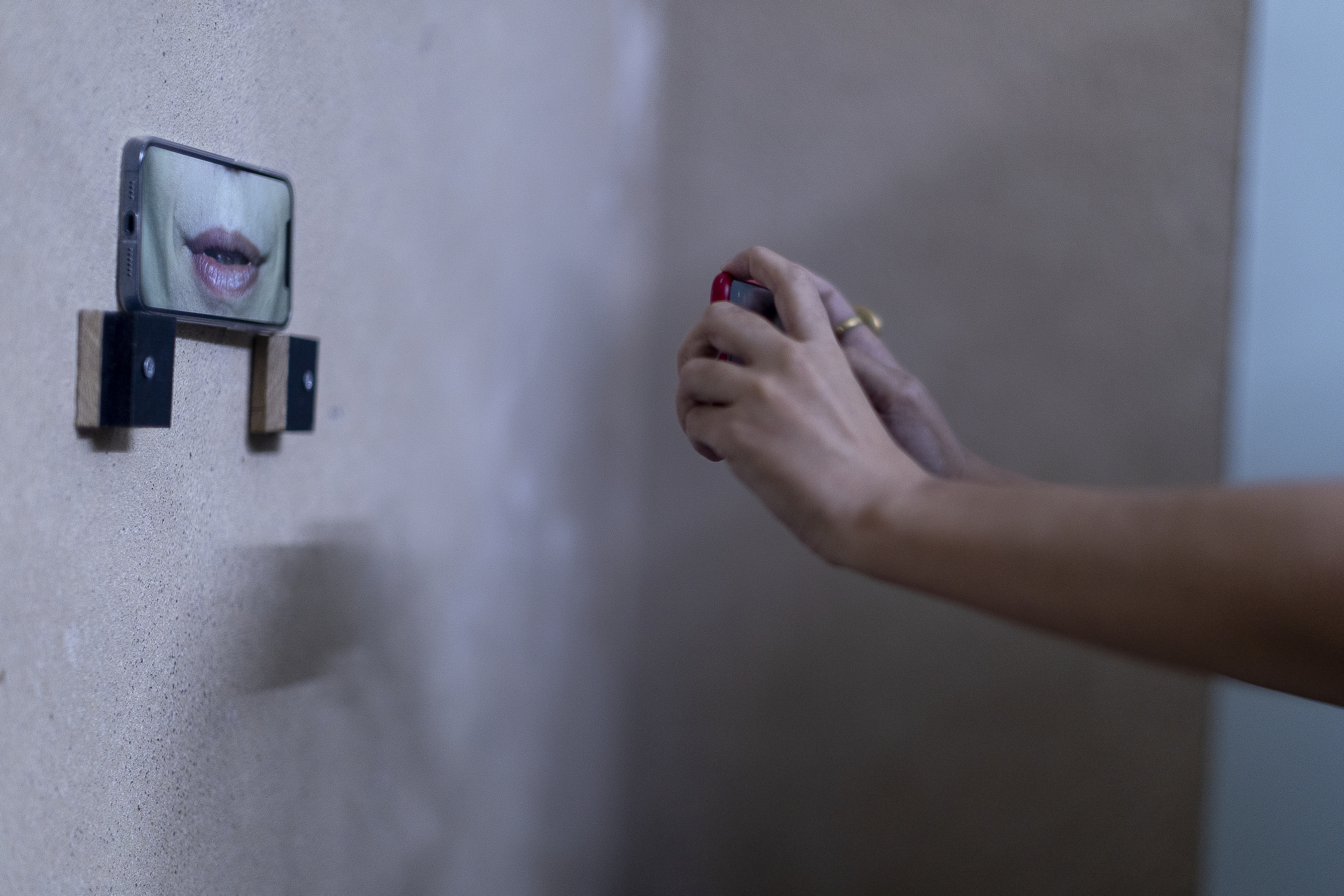
© Alípio Padilha
#3: Apóstrof’apocalipse
"Apóstrof'Apocalipse" é uma experiência imersiva onde o público, envolvido numa sequência sonora e textual intensa, recita karaokes poéticos em uníssono, explorando temas contemporâneos.
"Apostroph’Apocalypse" is an immersive experience where the audience, enveloped in an intense sequence of sound and text, recites poetic karaoke in unison, exploring contemporary themes.
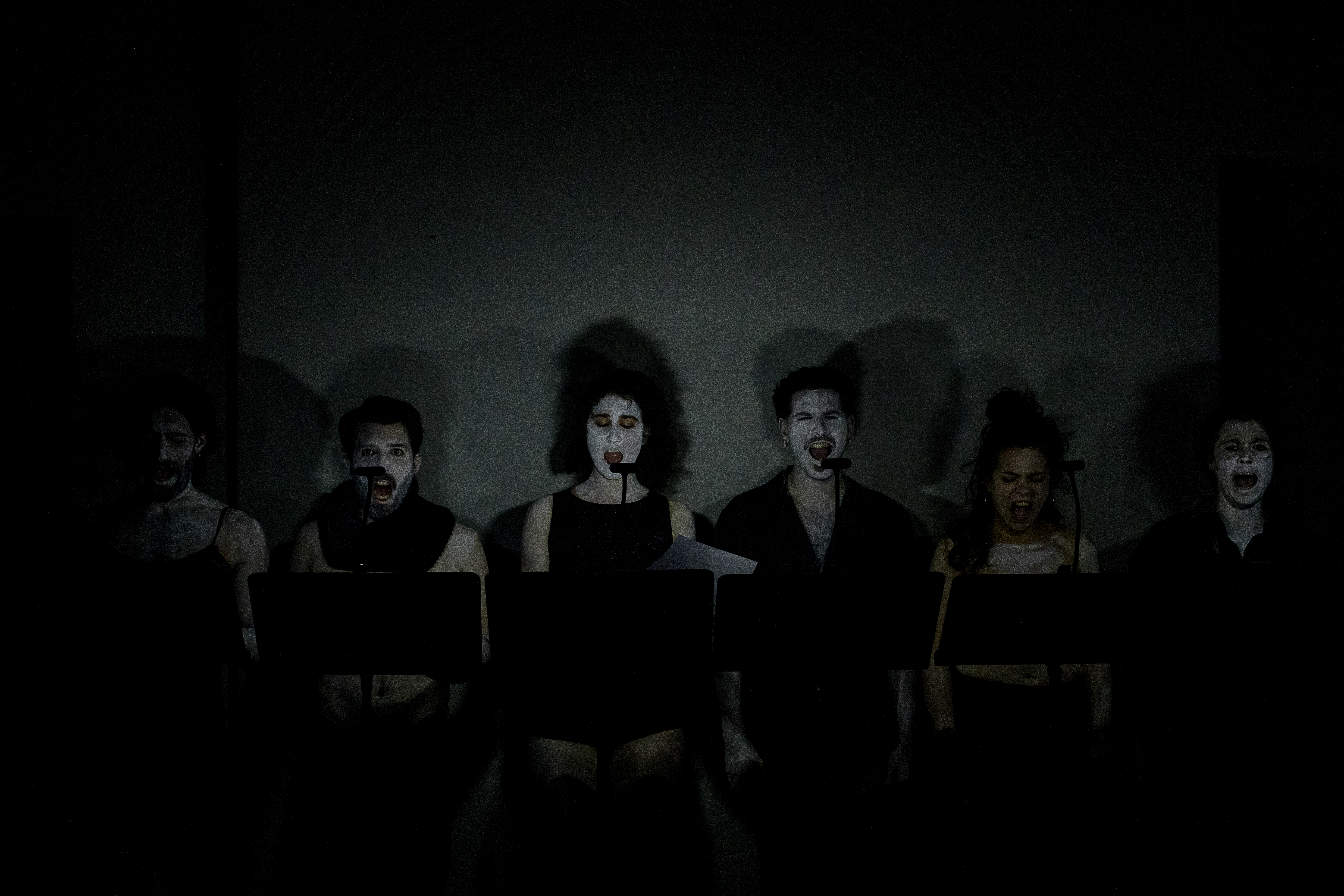
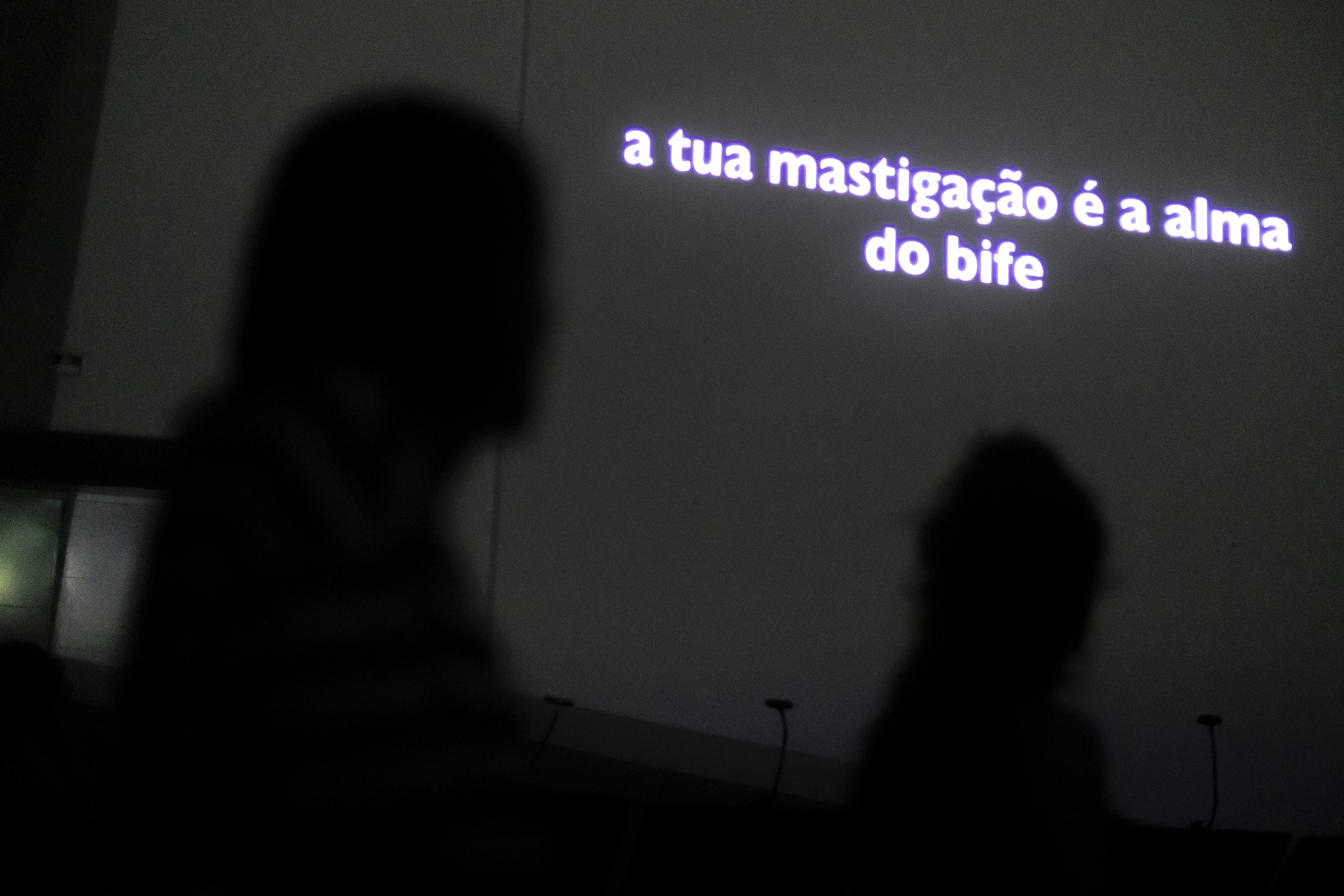
© Alípio Padilha
#4: Butôdadá
"Butôdadá" é uma performance instalativa onde cada performer improvisa um solo coreográfico e vocal inspirado na dança Butoh e no dadaísmo, enquanto o público circula pelo espaço e descobre frases que intensificam a experiência, confrontando corpo, linguagem e temas contemporâneos.
"Butodada" is an installation performance where each performer improvises a choreographic and vocal solo inspired by Butoh dance and Dadaism, as the audience moves through the space and discovers phrases that intensify the experience, confronting body, language, and contemporary themes.

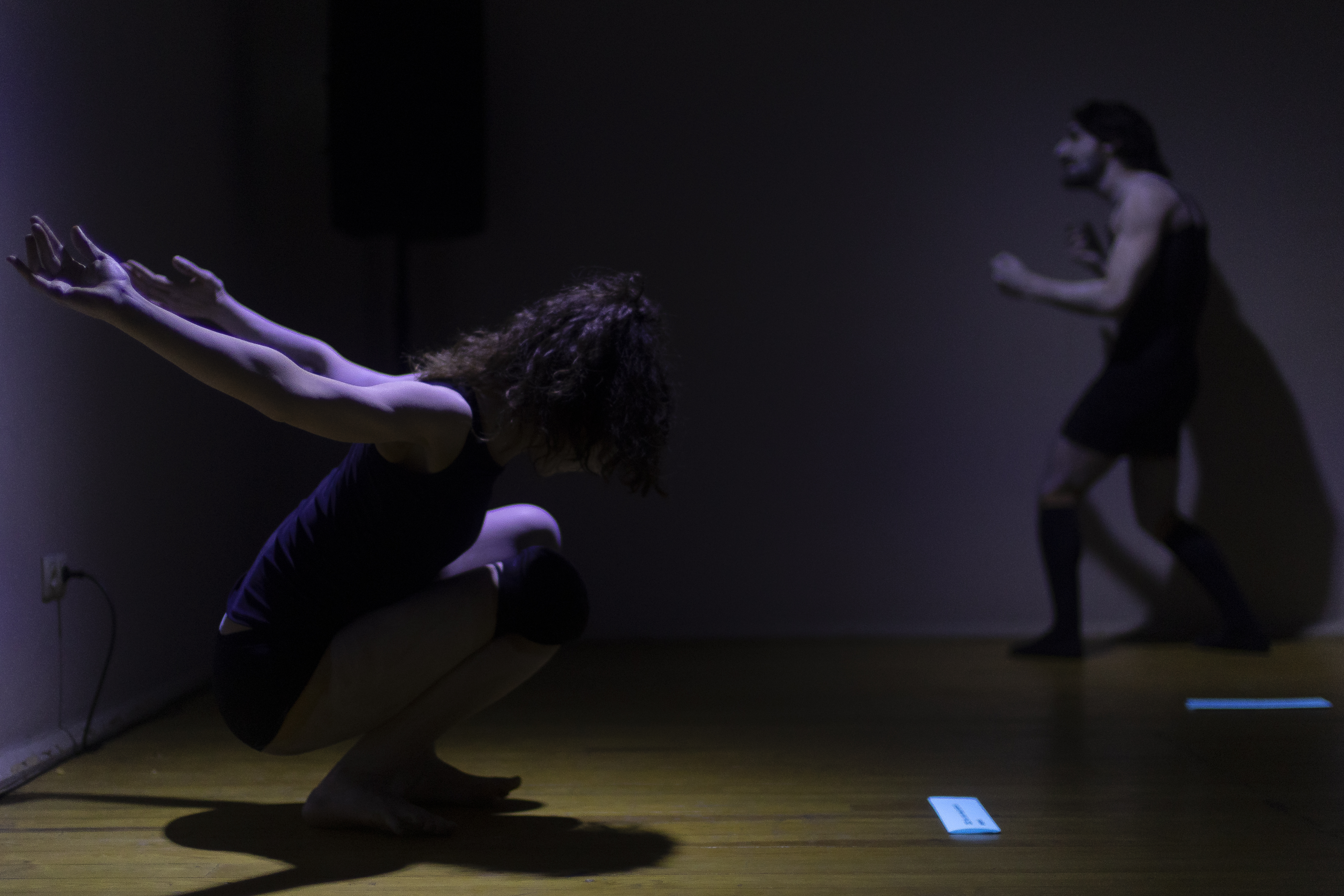

© Alípio Padilha e © Tatiana Lages
#5: A Piscina
"A Piscina" transforma uma ação comum de protesto climático — lançar tinta verde — em elemento central de uma performance, onde o confronto entre ativismo e arte gera uma escalada absurda de críticas e dúvidas sobre realidade e ficção, culminando numa participação ativa do público e numa reflexão sobre a neutralização do discurso político na arte.
"The Pool" transforms a common act of climate protest—throwing green paint—into the central element of a performance, where the confrontation between activism and art triggers an absurd escalation of critique and questions of reality versus fiction, culminating in active audience participation and a reflection on the neutralization of political discourse within art.

#6: Ode Triunfal
Em “Ode Triunfal”, um workshop conduzido por Iqbal Hossain, imigrante bengali, convida os espectadores a lançar brinquedos voadores luminosos ao céu num espaço público, refletindo poeticamente sobre trabalho, fronteiras e liberdade, culminando num momento de união e celebração ao som do hino da seleção de cricket do Bangladesh para o campeonato mundial de 2024.
In "Triumphal Ode", a workshop led by Iqbal Hossain, a Bengali immigrant, invites spectators to launch luminous flying toys into the sky in a public space, reflecting poetically on work, borders, and freedom, culminating in a moment of unity and celebration to the anthem of Bangladesh’s cricket team for the 2024 World Cup.
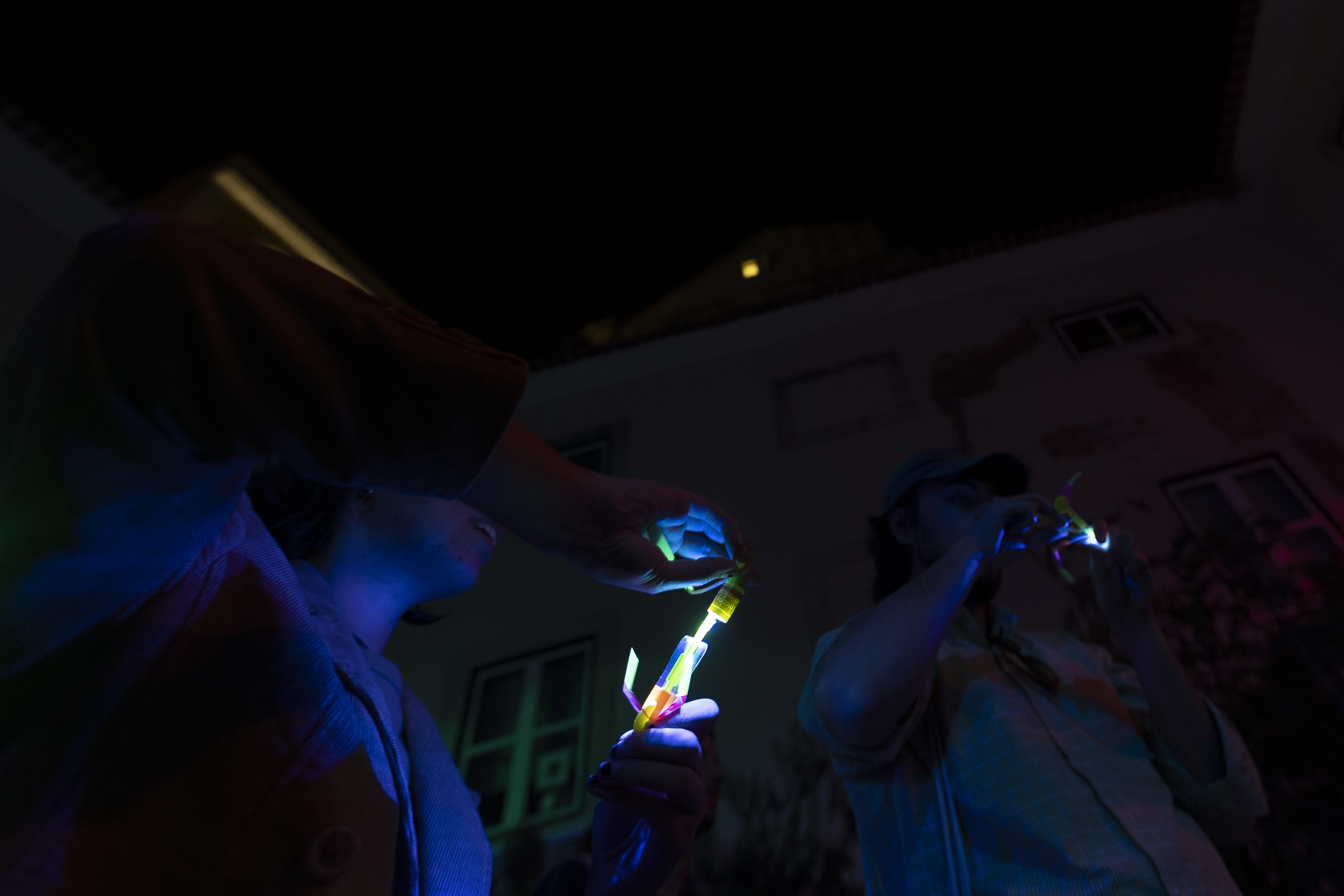

© Alípio Padilha
Support


